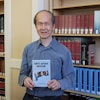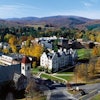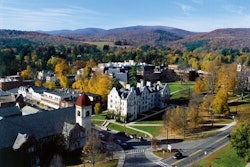Hmong America: Reconstructing Community in Diaspora, by Chia Youyee Vang, $25, University of Illinois Press, December 2010, ISBN-10: 9780252077593, ISBN-13: 978-0252077593, pp. 192.
Dr. Chia Youyee Vang only has hazy, disjointed memories of fleeing Laos with her family in 1979, waiting in a refugee camp in Thailand and coming to the United States when she was 9 years old.
“I often describe it as a film one had seen a very long time ago,” she writes. “One may be able to recall the themes and a few scenes here and there; however, one cannot accurately recount the entire story.”
Vang was one of more than 130,000 of her people who came to the United States in the late 1970s and early 1980s. From the early 1960s on, the United States had relied on the Hmong to fight against the North Vietnamese Army, which intruded into Laos during the Vietnam War.
After the U.S. pulled out of Vietnam in 1975, the Communist victors began enacting vengeance against those who had aided the Americans, including the Hmong. Thus began the exodus of the Hmong people.
Today, Vang is an assistant professor of history at the University of Wisconsin-Milwaukee and holds a doctorate from the University of Minnesota, but this is not a memoir of her journey. It is the first scholarly examination of the Hmong refugee experience to come from within the Hmong community.
In the book, she brings the experience of this ethnic group into sharp focus, retracing its origins in southwestern China, its role in the Southeast Asian conflict and the journey out of the war zones.
Setting the context, Vang notes that the Hmongs’ arrival in the United States came at a “critical moment in U.S. history” — just in time for them to share in the benefits of the Civil Rights Movement. They also benefited somewhat from American depictions of them as “freedom fighters and … victims of evil communism.”
The author focuses on the large number of Hmong who came to the Minneapolis-St. Paul area — as her family did — initially under the auspices of resettlement programs. Her first book was “Hmong in Minnesota.”
Her work also reflects her visits to Hmong enclaves in Bangkok, Thailand; Argentina; France; and her native Laos. There, Vang says she discovered that the “life I was born to lead and the life I am currently living are clearly worlds apart.” She argues, however, that her status as a Hmong “insider” uniquely positioned her to draw out and interpret some things that outsiders could not.
Her primary aim was to describe how refugees build ethnic communities “from scratch” in their new environment. Indeed, how can people who “arrive with almost no material resources” rebuild their lives and their culture in unfamiliar and sometimes unwelcoming circumstances? These are questions that should be of interest to many other ethnic groups, she says.
To find the answers, Vang conducted extensive interviews with refugees and those who assisted them, searched immigration archives and observed numerous community events such as New Year’s celebrations and religious observances.
Thirty-five years after the Hmongs’ Great Migration, they remain one of the most impoverished groups in America and suffer from bias and stereotyping. However, many lead comfortably middle-class lifestyles and are increasingly obtaining higher education, Vang says.
She concludes that the Hmong have preserved many traditions, maintained an ethnic identity and formed communities that even allow some to navigate life without the need or desire to learn English. While some aspects of the culture have been transformed, Vang says the Hmong constantly struggle to retain others, like certain religious rituals.
Perhaps most important, Vang argues, far from being the victims other observers have described, Hmong people have exercised a high degree of control over their fate. Among other examples of movement in pursuit of economic opportunity, she cites the conscious choice of some to relocate to the South to buy and operate poultry farms in the 1990s.
“Notwithstanding continuing poverty and discrimination, the American Hmong community has made great strides,” Vang writes. “Not only are they changing their own culture and its traditions in order to exist in American society but also the unlikely places in which they have reconstructed community have undergone much transformation as a result of their presence.”















